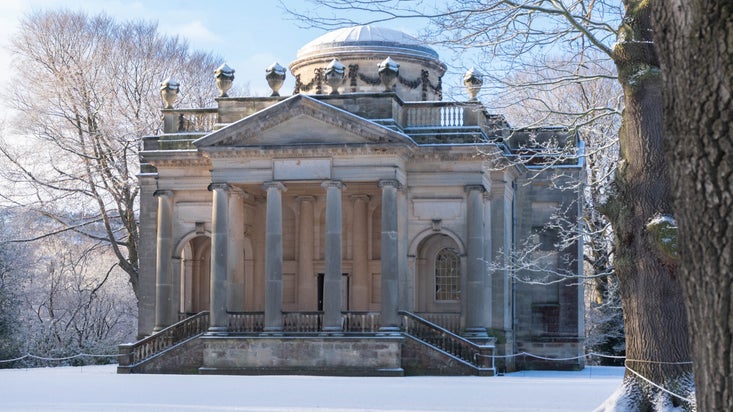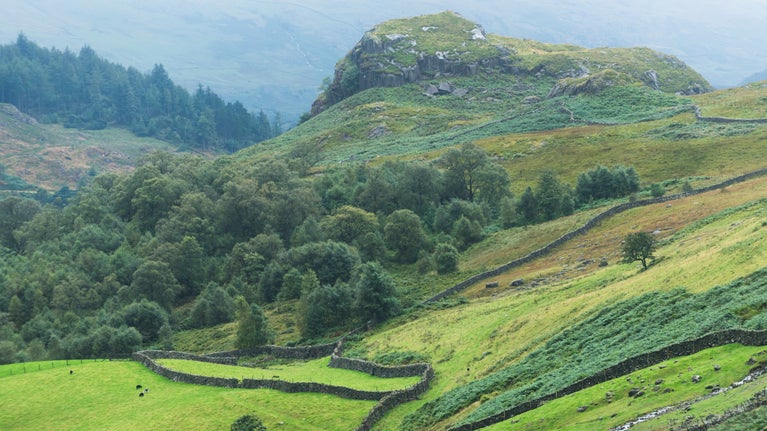
Discover more at Eskdale and Duddon Valley
Find out how to get to Eskdale and Duddon Valley, where to park, the things to see and do and more.
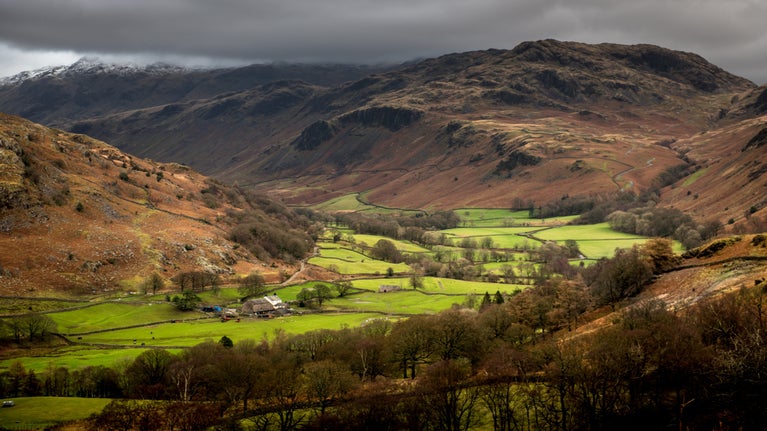
Discover the rich history of Eskdale and Duddon Valley, from prehistoric times up to the present day of the National Trust era. Find out about the industrial heritage of both locations, and how they provided literary and artistic inspiration to some famous writers and artists.
Eskdale begins in the lofty Lake District heartland of the Scafell massif, running south-west to the coast. It’s a mixed and dramatic landscape, going from steep, craggy and volcanic uplands, through softer, broader land and down to its wide tidal estuary at Ravenglass. In fact, this is the only place in England where mountains plunge almost directly into the sea.
Human presence in Eskdale can be traced back to around 8000 BC when Mesolithic hunters settled by the sea. Later prehistoric sites include both Neolithic and Bronze Age stone circles and settlement remains on Boot Bank and around Devoke Water. And there are burial sites at Eskdale Moor, Bootle Fell, Stainton and Great Grassoms.
In Roman times, forts were built on the coast at Ravenglass and high up on the mountain pass at Hardknott, where up to 500 cavalry would have been garrisoned. Some of the Roman remains at Ravenglass now form part of the Frontiers of the Roman Empire (Hadrian’s Wall) World Heritage Site.
Like many other places in the Lake District, Norse settlers and farmers left their mark through numerous place names, including Brotherilkeld, meaning ‘the booth of Ulfkell’, and with the use of the suffix ‘thwaite’ meaning ‘a clearing’.
By the 12th century, much of Eskdale was part of the Copeland Forest and used as hunting land, with manors owned by feudal barons. On the coast, Ravenglass developed as a harbour and trading port, and to the south, Bootle grew in size with its market and fair charter granted in 1347. It was at the close of the 16th century that the more distinctive Lake District farmsteads began to take their modern form.
In 1875, a narrow-gauge railway was built to take iron ore away to the coast at Ravenglass and then later used to transport granite from Eskdale’s quarries. Today, La’al Ratty, as it’s known locally, is a popular tourist attraction boasting the oldest working 15” gauge locomotive in the world.
Because of its more remote, westerly position, Eskdale didn’t receive the same degree of attention from 18th century visitors as the other, more accessible valleys. JMW Turner sketched Eskdale Mill at Boot but probably never visited in person, basing his work on an earlier composition by Edward Dayes. Coleridge, however, did pay a visit and wrote passionately about the landscape in his ‘Notebook’ of 1802.
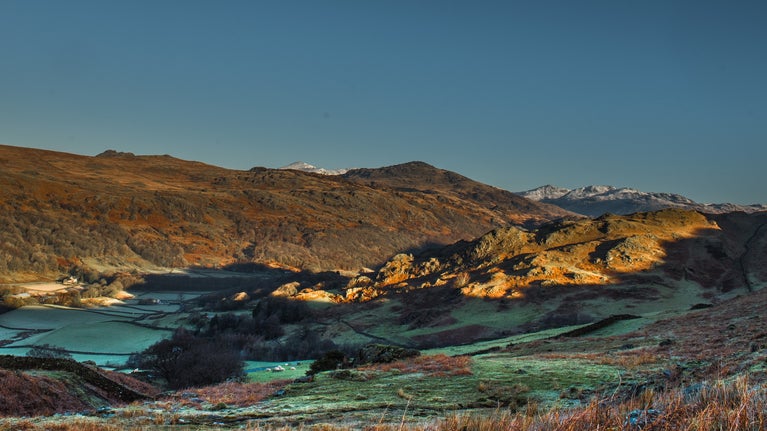
From a conservation perspective, the National Trust now owns and manages a number of farms in upper Eskdale, with a total of 4,959 hectares, and Friends of the Lake District campaigned strongly against a large hydroelectric generation plan in upper Eskdale in the 1940s.
Registered charity, Fix the Fells, are also instrumental in helping to protect and maintain the busy Lake District paths from erosion, especially in Eskdale, where the high fells are so popular with walkers.
With its high mountains at one end and lovely coastline at the other, and its strong farming and industrial heritage, Eskdale has a particularly special character.
Also known as Dunnerdale, the more intimate and narrow valley of the River Duddon has no lake of its own and is enclosed at its head by the rugged high fells of Harter Fell, Ulpha Fell and Grey Friar, with two of England’s highest mountain passes meeting here at Cockley Beck. The valley then runs south-west to meet the wide estuary and the Irish Sea.
The Duddon landscape has changed little since the 18th century, when William Wordsworth wrote 'Time, in most cases, and nature everywhere, have given a sanctity to the humble works of man, that are scattered over this peaceful retirement' (Notes to The River Duddon, A Series of Sonnets, 1820).
Settlement here dates to at least the Neolithic period, with the remains of one of the most impressive of the Lake District’s many stone circles to be found at Swinside Farm. Traces of Bronze Age settlers are also visible on the fells above the valley, like at Crosbythwaite and Seathwaite.
However, there’s no obvious medieval settlement centre in the Duddon Valley, although nearby Furness Abbey was influential here, with Monk Foss Farm taking its name from the connection. The abbeys would also have helped develop and control the medieval iron industry.
Today, the valley is still thinly populated with two small hamlets at Seathwaite and Ulpha and the nearest larger village at Broughton-in-Furness, just to the east of the estuary.
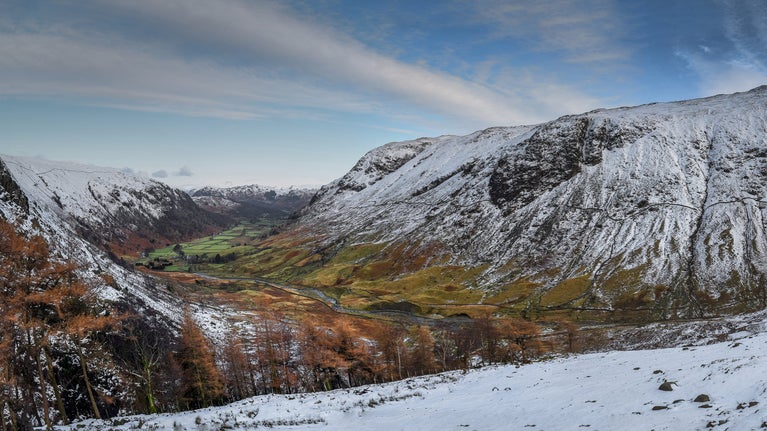
Its combination of geology, woodland and water resources made the Duddon Valley an important location for industry over several centuries. This included slate quarrying, copper mining, iron smelting, peat extraction and cloth manufacturing.
Although now there is little in the way of industry here, there are still the remains of many charcoal burning ‘pitsteads’ on the western side of the valley. There are also old carding mills where wool would have been prepared for spinning, and ‘retting’ ponds where hemp grown for rope would be soaked.
The valley was the subject of a series of sonnets published by Wordsworth in 1820 and they received more praise in his lifetime than any other of his works. When JMW Turner read them, it inspired him to visit and paint Duddon Sands. Samuel Taylor Coleridge also wrote of the valley in his 1802 notebook, calling it 'O lovely, lovely Vale!'.
Unlike other areas of the Lake District, there has been little to trouble conservationists in the Duddon Valley over the centuries. There were protests over the development of Seathwaite Tarn as a drinking water reservoir in the early 20th century and in recent years some steps have been taken to remove infrastructure from the landscape.
Friends of the Lake District helped reduce the impact of commercial forestry in the upper valley, making Black Hall Farm exempt from planting. The National Trust subsequently took possession of the farm.
The Duddon Valley may be a modest, less-frequented place but it is a rich, beautiful and inspiring landscape with a significant identity and history just waiting to be explored.

Find out how to get to Eskdale and Duddon Valley, where to park, the things to see and do and more.
Learn about people from the past, discover remarkable works of art and brush up on your knowledge of architecture and gardens.
